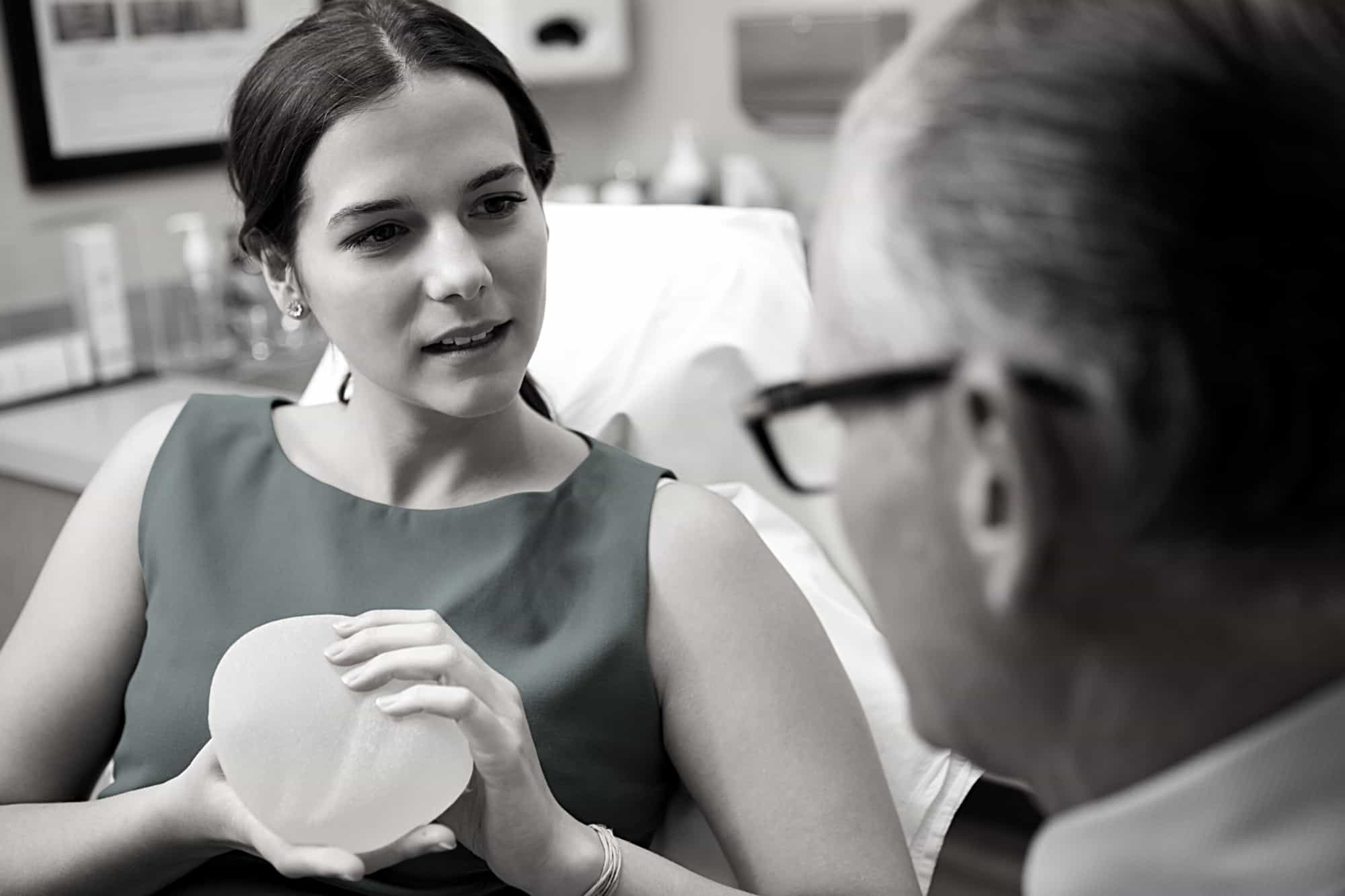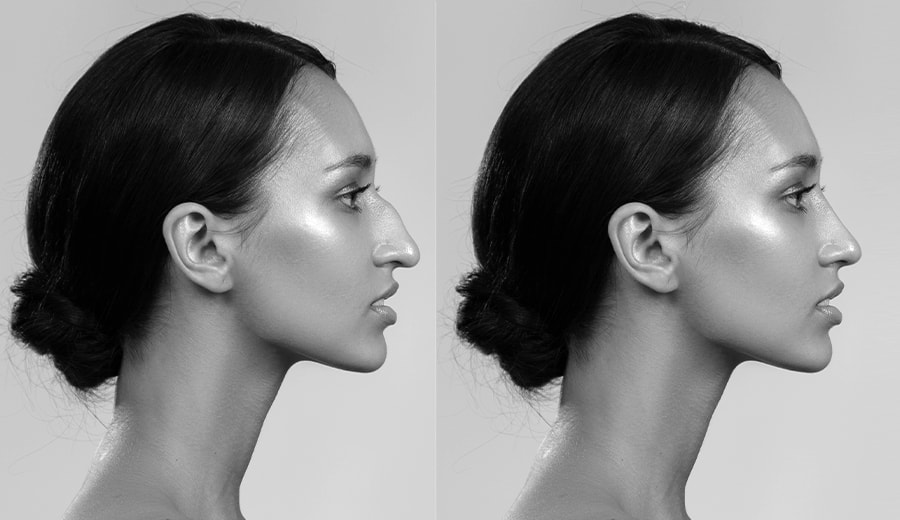April 21st, 2025
Dr. Mulholland, Md
Uneven Boobs
Many women often observe asymmetry between their breasts, a common and entirely normal condition. This article thoroughly explores breast asymmetry, encompassing its prevalence, diverse causes, the appropriate timing to seek medical advice, available treatment options, and insights into what to anticipate during a consultation with a healthcare professional.
Understanding the intricacies of uneven breast development empowers individuals to make informed decisions about their bodies, fostering a sense of self-acceptance and knowledge regarding the range of options available for those who may choose to address this natural variation.
What is Breast Asymmetry?
Breast asymmetry, or uneven boobs, is a prevalent condition where one breast is larger than the other, affecting more than half of women. It entails size, volume, position, or shape variations between the breasts. While minor differences in breast size, shape, and position are typical, significant asymmetry may be linked to a heightened risk of breast cancer, as recent studies indicate a positive correlation between a breast asymmetry ratio surpassing 20% and increased breast cancer risk.
Although irregularities are generally not cause for alarm, understanding the prevalence of uneven breast development and its potential implications for breast cancer risk underscores the importance of vigilance and proactive monitoring of this common condition.

What Causes Uneven Breasts?
Breast asymmetry can be caused by naturally occurring changes in the body, medical conditions, or even bodily trauma. Some reasons why uneven breasts occur include:
- A medical condition impacting the breast tissue
- Developmental/hormonal problems
- Changes in hormones
- Injury
- Birth control or other contraceptives that affect hormones
- Pregnancy
- Genetics
- A side effect of medical treatments
When Should You Be Concerned?
While minor unevenness in breast size is considered average, notable size, shape, or texture alterations could signal an underlying issue. Signs that necessitate medical attention encompass abrupt changes in breast size, shape, or surface, mainly if there is significant asymmetry in breast size or density.
Recent studies indicate that asymmetry breast was found to be more pronounced in healthy women who later developed breast cancer compared to those who did not. Given these findings, routine mammograms play a pivotal role in the early detection of potential issues, enabling healthcare providers to intervene promptly. Regular breast self-examinations are also crucial, and any observed unusual changes should prompt consultation with a healthcare provider.
Seeking prompt medical advice upon noticing any of these symptoms is essential for comprehensive breast health management.
Can you Correct Uneven Breasts?
Yes, you can correct uneven breasts. Addressing breast asymmetry involves a spectrum of correction options, ranging from non-surgical interventions to surgical procedures. The selection of the appropriate treatment modality hinges on individual preferences, specific needs, and the expertise of healthcare professionals guiding the process.
Non-Surgical Options
- Bra Inserts: These are a non-invasive solution that provides additional support and volume to the smaller breast, achieving a more balanced appearance.
- Clothing Choices: Strategic clothing selection can contribute to the illusion of symmetry. Padded or underwire bras, high-necked or scoop-necked tops, and A-line or empire-waist dresses are examples of options that can enhance balance.
Surgical Options
- Breast Lift (Mastopexy): This surgical procedure alters breast positioning to enhance symmetry. It involves repositioning breast tissue and may include the use of implants to augment the size of the smaller breast.
- Breast Reduction: Geared towards reducing the size of the larger breast, this procedure may entail the removal of excess breast tissue, fat, or skin to achieve proportional symmetry.
- Breast Augmentation: Aimed at increasing the size of the smaller breast, this surgical intervention can involve using saline or silicone implants to achieve a more balanced appearance.
- Fat Transfer Breast Augmentation: In some instances, fat transfer procedures can be employed, wherein fat is moved from one area of the body to the breasts, contributing to a more harmonious and balanced aesthetic.
Consulting with a board-certified plastic surgeon is pivotal in determining the most suitable treatment plan tailored to individual needs. This consultation ensures a comprehensive understanding of each option’s potential risks and benefits, empowering individuals to make informed decisions regarding their breast asymmetry.
What to Expect from a Consultation with Toronto Plastic Surgeons
A consultation with Toronto Plastic Surgeons at Toronto Plastic Surgeons prioritizes a compassionate and confidential approach to addressing your concerns. During this process, your personal information is handled with the utmost confidentiality, ensuring privacy is respected.
Toronto Plastic Surgeons listens attentively to your concerns, gathering details about your medical history, medications, and current health conditions. With a focus on your specific needs, a tailored treatment plan is crafted, encompassing non-surgical options like bra inserts or clothing and surgical options such as breast lift, reduction, or augmentation.
Toronto Plastic Surgeons guides you through the available surgical choices, facilitating an informed decision-making process. Prepare questions to ensure a comprehensive understanding of options and make an informed decision tailored to your needs. The consultation aims to create a comfortable and supportive environment for addressing and correcting breast asymmetry.
Conclusion
Breast asymmetry, affecting over half of women, is generally expected, but notable changes in size, shape, or texture may signal an issue. Routine mammograms are crucial for early detection, addressing concerns linked to irregular breast size.
Stemming from various factors like natural development and hormonal changes, breast asymmetry is typically unrelated to breast cancer.
Treatment options vary, from non-surgical to surgical interventions, with a consultation with Toronto Plastic Surgeons at Toronto Plastic Surgeons offering a compassionate and confidential approach.
Contact TPS for more information or to schedule a consultation to explore options for addressing breast asymmetry.
FAQ
Can you get a breast augmentation performed on one breast?
Yes, breast augmentation on one breast is possible and often recommended for significant asymmetry.
Can I correct breast asymmetry through exercise?
Exercise alone is insufficient for addressing substantial breast asymmetry; non-surgical or surgical interventions are usually necessary.
When will I see the results of my breast augmentation?
Results are immediately noticeable post-surgery, but the outcome may take a few months as the breasts settle into their new shape and position.
Is asymmetric breast tissue a sign of malignancy?
Breast asymmetry, or uneven boobs, is generally a common and benign condition affecting over half of women. Recent studies indicate a positive correlation between a breast asymmetry ratio of over 20% and increased breast cancer risk. Routine mammograms are crucial for early detection and monitoring.
Why are my boobs far apart?
Genetics, hormonal changes, and natural development influence breast positioning. While common, significant differences in breast position may be addressed through surgical options like breast augmentation or breast lift.
Which breast is usually bigger?
Slight differences in breast size are standard, with the left breast typically slightly larger than the right. Significant variations may be addressed through various treatment options, including surgical procedures.
Can you get a breast augmentation performed on one breast?
Yes, you can opt to receive a single breast implant to increase the size or correct the shape of your breast. If your goal is to have your breasts match each other, this is the best option. Implants of different sizes are also often recommended, especially if you have a smaller chest, to correct breast asymmetries and give you perfect-looking results.
Can I correct breast asymmetry through exercise?
No, you cannot correct breast asymmetry through exercise – cosmetic surgery is the only effective solution to correcting breast unevenness.
When will I see results from my breast augmentation?
After your breast augmentation, your breasts will immediately feel tight and appear higher than expected, but over the first few months of recovery, your body will heal and the swelling will subside. By this time, your breasts will appear perkier and have settled into their natural position.



